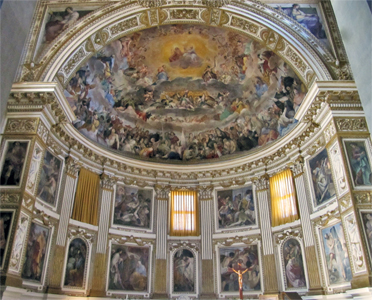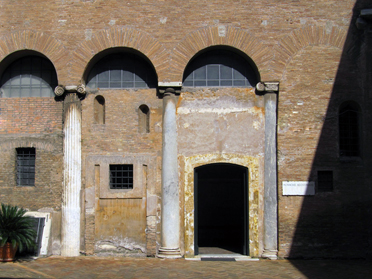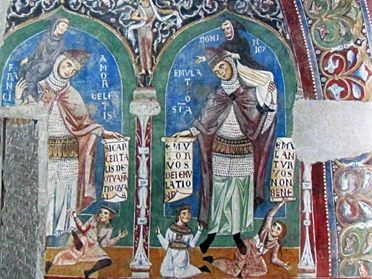SUN AN’ SOUL - DREAM AN’ ROME
SANTI QUATTRO CORONATI BASILICA
 |
| Santi Quattro Coronati Basilica - click to enlarge |
The Santi Quattro Coronati Basilica despite the chaotic appearance is one of the most impressive complexes of Rome.
According to a tradition the Four Crowned Saints (the crown of martyrdom)
were Roman sculptors put to death by Diocletian around 290 A.D. for refusing to sculpt a pagan idol.
The monastery is situated on a Roman palace whose great hall with an apse was turned into a church between the fourth and fifth century.
In the ninth century the church was fortified and rebuilt in the form of a grand basilica with three naves, by Pope Leo IV who had been titular cardinal of the church. But in 1084, when the Normans commanded by Robert Guiscard entered Rome to release Pope Gregory VII, besieged by the head of the Holy Roman Emperor Henry IV, for three days they sacked Rome burning, among others, the Santi Quattro Coronati Basilica.
Pope Paschal II, who was responsible for the reconstruction of many Roman churches,
the early twelfth century, rebuilt the church, shortening the nave, and dividing it into one nave and two aisles, while from the previous aisles were obtained rooms for the convent.
Over the unadorned façade of
the complex stands the oldest bell in Rome, dating back to the ninth century.
The first courtyard probably corresponds to the quadrangle that preceded the great basilica of Leo IV. From here you pass in the second courtyard,
made out from the beginning of the nave of the Leo IV church.
 |
| The second courtyard - click to enlarge |
In the porch before the entrance to the church you can see the frescoes of the '600 representing the Augustinian nuns who pray the Santi Quattro.
The three naves of the present church are separated by granite columns with ancient Roman capitals.
The Cosmatesque floor
dates back to the twelfth century.
The apse is the one that at the time of Leo IV embraced the nave, then divided into three naves in the twelfth century, the spectacular frescoes,
of 1630, are the masterpiece by Giovanni da San Giovanni.
From the left aisle you can access the evocative cloister of the thirteenth century.
However, the excavations, concluded in 2006, showed substantial pre-existing Roman building, among other numerous swords have been found.
Back in the second courtyard, from here you enter the room of the calendar, where the cloistered nuns grant permission to visit
the enchanting San Silvestro chapel, consecrated in 1247. The splendid Cosmatesque floor
for the particular weaving is of the type called “Opus Alexandrinum”.
The fresco cycle is a series of episodes culminating with the donation of Rome
by Constantine to Pope Sylvester I.
 |
| The donation of Rome - click to enlarge |
In 2000 ended the restorations which brought to light one of the most relevant medieval cycle of frescoes named Gothic Hall, discovered in 1995. The frescoes painted between the thirties and forties of the thirteenth century, in a slightly later stage since the canonization of San Domenico (1234),
depicted as an example of Right Emulation.
Spatiality, naturalism, the vivacity of representations, are an unexpected surprise about the Roman pictorial reality of the XIII century and someone speaks of a Roman mortgage on the frescoes of the Assisi basilica.
 |
| Frescoes of the Gothic Hall, San Domenico - click to enlarge |
back |

